
Historic places
- Historic places in Sri Lanka are accompanying the history of Sri Lanka. It is believed that Sri Lankan history was beginning as early as one million years ago. Because there was human habitation in the Indian sub-continent for around two million years and Sri Lanka linked with the Indian sub-continent by a land bridge called Adam’s bridge.
The deposits of ancient coastal sands and gravels referred to as the “Iranamadu Formation” was found at the Pathirajawela area near Bundala and Minihagalkanda in Yala national park and some places in the north provide evidence that there was a prehistoric settlement in Sri Lanka by about 125,000BP. The small-flake stone tool industry found in this area confirms that these people made tools of quartz, which they used to remove flesh from the hunted animals.
The remains of an Upper Pleistocene fauna, notably, hippopotamus, rhinoceros, and lion were found in the gem-bearing alluvial gravels of Rathnapura district, which has been dated 80,000 BP now displayed at Rathnapura archaeological Museum. Fa- Hien- Lena, cave (or Pahiyangala) at Bulathsinhala has yielded the evidence (at 37,000BP) of anatomically modern man in Sri Lanka referred to as “Balangoda Man”, was the earliest found in South Asia. Several other human remains have been found in Batadomba-Lena near Kuruwitha, Beli-Lena at Kitulgala, and Alu-Lena near Kegalle.
These anatomically modern prehistoric humans in Sri Lanka are stood at an estimated height of 174cm. (5’ 8”) for males and 166cm. (5’ 5’’) for females in certain samples, which is considerable when compared with present-day Sri Lankans.
Balangoda Man appears to have settled in practically every nook and corner of the country ranging from the damp and cold high plains as Maha-Eliya (Horton Plains) to the arid lowlands of Mannar and Wilpattu, to the steamy equatorial rain forests at Rathnapura and suburb.
The pollen and other multi-proxy records confirm that the herding and the incipient management of barley and oats by around 15,000 BP was done at the Horton Plains. The Doravak-Lena shelter near Warakapola has yielded a geometric microlithic industry.
Early Iron Age manifestation of the country was found at Anuradhapura and Aligala shelter in Sigiriya (1,000-800BC). The settlement at Anuradhapura exceeded 10 hectares in extent by 800BC and it was at least 50ha by 700-600BC and thus already a “town”. In this period Sri Lankans were engaged in agricultural activities with the application of irrigation techniques. They have developed a unique hydraulic civilization and possessed a superior cultural heritage.
The burial grounds used by them for funeral purpose and clay utensils used by them were found from Ibbankatuwa in Dambulla area, Yatigalpotta near Galewela area, and Pomparippu at Wilpattu National Park.
According to the “Mahavamsa”, Vijaya came from Kalinga in India with his 700 followers landed in Sri Lanka, near “Mahathitha” (Mantota or Mannar) on the same day as the death of Lord Buddha.
Early Kingdoms
The early tribes were living as isolated groups and they may have their own regional leaders and their own system of administration. The monarchical system of administration was enforced by Vijaya. According to the Mahavamsa “Thammannawa” become the island’s first capital and is speculated to have been located by the Malwatu River in the northwest, while the “Upatissa Nagara” become the second capital, located near the mouth of Malwatu River, south of Thammannawa. The third capital city, Panduvasnuwara, may have been located mid-way along the Malwatu River. The next capital, Anuradhapura, was situated further up on the banks of the Malwatu River.
Although Anuradhapura functioned as a town from 700-800 BC., King “Pandukabhaya” converted it to capital and laid out a systematically planned city of a highly artistic nature. The pioneer hydraulic engineer, King Pandukabhaya (474-407 BC.) built the first massive reservoir called Abahaya Wewa on the right bank of the Malwatu River as well as designing a sanitary system, gardens, an irrigation and water supply system, temples, cemeteries, burial grounds, etc.
The systematically planned capital city flourished under many subsequent kings who ruled for nearly 15 centuries to 10th century AD and is considered to be the cradle of a civilization nurtured with the arts, crafts, literature, and high technological skills, predominantly of a superior and unrivaled nature in comparison with the other great biblical city of Babylon and the advancement of social structure rivaled the great Egyptian cities of “Karnak”, “Luxuor” and “Thebes”.
At the time of King “Devanampiyatissa” Buddhism was introduced into the country in 247 BC by India under the guidance of Arhat Mahinda, the son of the Mauryan Emperor Ashok, which changed the way of the country remarkably and influenced every nook and corner of the country and its culture.
For around 15 centuries Anuradhapura stood as a significant religious nucleus, centered on the concept of kingship. There were about 122 kings and queens ruling the country during this period. Some monarchs were extremely powerful and able to rule the country in single sovereignty, but some were not as powerful as that and as a result, the Anuradhapura kingdom became highly vulnerable to invasions from South India and suffered the overthrow of the throne several times, by invading kings from South India. However Sinhalese kings have managed to defeat the invaders after reorganizing their troops, although the invading kings ruled in the meantime.
The arts, crafts, and architectural creations gradually advanced during the early Anuradhapura period and achieved their exemplary status in the late Anuradhapura period. Dr. R.L Brohier who wrote the book “Ancient Irrigation Works in Ceylon” stated that the irrigation techniques of the Sinhalese also reached their supreme level in this period.
King Mahinda V ascended the throne in 982 AD; the last Sinhalese king to rule the country from this glorious city. In 1017 AD the entire island was controlled by South India. They ruled the country for 73 years. They moved the capital city to Polonnaruwa from Anuradhapura.
Medieval Kingdom
The internal revolts and South Indian invasions resulted in the transferring of the capital of the kingdom from Anuradhapura to Polonnaruwa as a temporary administration center and a more secure place from 7th century AD.
The great Vijayabahu I defeated the Chola king and recaptured the whole island, chose to established Polonnaruwa as the new capital of the country. The Polonnaruwa era existed from 1017 to 1235 AD and 19 kings and queens ruled the country. Once again South India was conquered Polonnaruwa. This time pirate named Magha was controlling the island.
Late Kingdoms
King Vijayabahu III started to re-establish rule over the island after defeating Magha and chose Dambadeniya as the capital of the country in 1220 AD. Four kings ruled the country from there.
King Bhuvanekabahu I (1271 to 1283 AD) was the last king of Dambadeniya and he moved the capital to Yapahuwa, which was considered a strategically important point since the Polonnaruwa era. The most famous Mayan like steep stairway in Yapahuwa was built for the pathway to the palace of Sacred Tooth Relic.
Then Kurunegala became the Royal capital of the country from King Bhuvanekabahu II (1293-1302 AD) and remained so for about half a century.
Gampola was made the capital city of the island by King Bhuwanekabahu IV (1341-1353 AD). King Buwanekabahu V was the last king of Gampola and ruled the country for 29 years. A separate city was built at Kotte in the western lowlands by the provincial leader Alagahakonara during his reign.
Kotte became the next capital city of the country when King Parakramabahu VI (1415-1467 AD.) choose Kotte as his power base. He was the last Sinhalese king who managed to re-establish rule over the island. After his death, the country was once again plunged into a divisive struggle and Kandyans asserted their independence from Kotte.
The Kingdom of Kandy was begun in 1469. In 1590 it has become the only independent native state in the country. It was lasting until the treaty between the Kandyan kingdom and the British were signed in 1815 at the Kandyan Convention. After that Sri Lanka become the Crown colony until 1948.
- Historic places in Sri Lanka are accompanying the history of Sri Lanka. It is believed that Sri Lankan history was beginning as early as one million years ago. Because there was human habitation in the Indian sub-continent for around two million years and Sri Lanka linked with the Indian sub-continent by a land bridge called Adam’s bridge.
The deposits of ancient coastal sands and gravels referred to as the “Iranamadu Formation” was found at the Pathirajawela area near Bundala and Minihagalkanda in Yala national park and some places in the north provide evidence that there was a prehistoric settlement in Sri Lanka by about 125,000BP. The small-flake stone tool industry found in this area confirms that these people made tools of quartz, which they used to remove flesh from the hunted animals.
The remains of an Upper Pleistocene fauna, notably, hippopotamus, rhinoceros, and lion were found in the gem-bearing alluvial gravels of Rathnapura district, which has been dated 80,000 BP now displayed at Rathnapura archaeological Museum. Fa- Hien- Lena, cave (or Pahiyangala) at Bulathsinhala has yielded the evidence (at 37,000BP) of anatomically modern man in Sri Lanka referred to as “Balangoda Man”, was the earliest found in South Asia. Several other human remains have been found in Batadomba-Lena near Kuruwitha, Beli-Lena at Kitulgala, and Alu-Lena near Kegalle.
These anatomically modern prehistoric humans in Sri Lanka are stood at an estimated height of 174cm. (5’ 8”) for males and 166cm. (5’ 5’’) for females in certain samples, which is considerable when compared with present-day Sri Lankans.
Balangoda Man appears to have settled in practically every nook and corner of the country ranging from the damp and cold high plains as Maha-Eliya (Horton Plains) to the arid lowlands of Mannar and Wilpattu, to the steamy equatorial rain forests at Rathnapura and suburb.
The pollen and other multi-proxy records confirm that the herding and the incipient management of barley and oats by around 15,000 BP was done at the Horton Plains. The Doravak-Lena shelter near Warakapola has yielded a geometric microlithic industry.
Early Iron Age manifestation of the country was found at Anuradhapura and Aligala shelter in Sigiriya (1,000-800BC). The settlement at Anuradhapura exceeded 10 hectares in extent by 800BC and it was at least 50ha by 700-600BC and thus already a “town”. In this period Sri Lankans were engaged in agricultural activities with the application of irrigation techniques. They have developed a unique hydraulic civilization and possessed a superior cultural heritage.
The burial grounds used by them for funeral purpose and clay utensils used by them were found from Ibbankatuwa in Dambulla area, Yatigalpotta near Galewela area, and Pomparippu at Wilpattu National Park.
According to the “Mahavamsa”, Vijaya came from Kalinga in India with his 700 followers landed in Sri Lanka, near “Mahathitha” (Mantota or Mannar) on the same day as the death of Lord Buddha.
Early Kingdoms
The early tribes were living as isolated groups and they may have their own regional leaders and their own system of administration. The monarchical system of administration was enforced by Vijaya. According to the Mahavamsa “Thammannawa” become the island’s first capital and is speculated to have been located by the Malwatu River in the northwest, while the “Upatissa Nagara” become the second capital, located near the mouth of Malwatu River, south of Thammannawa. The third capital city, Panduvasnuwara, may have been located mid-way along the Malwatu River. The next capital, Anuradhapura, was situated further up on the banks of the Malwatu River.
Although Anuradhapura functioned as a town from 700-800 BC., King “Pandukabhaya” converted it to capital and laid out a systematically planned city of a highly artistic nature. The pioneer hydraulic engineer, King Pandukabhaya (474-407 BC.) built the first massive reservoir called Abahaya Wewa on the right bank of the Malwatu River as well as designing a sanitary system, gardens, an irrigation and water supply system, temples, cemeteries, burial grounds, etc.
The systematically planned capital city flourished under many subsequent kings who ruled for nearly 15 centuries to 10th century AD and is considered to be the cradle of a civilization nurtured with the arts, crafts, literature, and high technological skills, predominantly of a superior and unrivaled nature in comparison with the other great biblical city of Babylon and the advancement of social structure rivaled the great Egyptian cities of “Karnak”, “Luxuor” and “Thebes”.
At the time of King “Devanampiyatissa” Buddhism was introduced into the country in 247 BC by India under the guidance of Arhat Mahinda, the son of the Mauryan Emperor Ashok, which changed the way of the country remarkably and influenced every nook and corner of the country and its culture.
For around 15 centuries Anuradhapura stood as a significant religious nucleus, centered on the concept of kingship. There were about 122 kings and queens ruling the country during this period. Some monarchs were extremely powerful and able to rule the country in single sovereignty, but some were not as powerful as that and as a result, the Anuradhapura kingdom became highly vulnerable to invasions from South India and suffered the overthrow of the throne several times, by invading kings from South India. However Sinhalese kings have managed to defeat the invaders after reorganizing their troops, although the invading kings ruled in the meantime.
The arts, crafts, and architectural creations gradually advanced during the early Anuradhapura period and achieved their exemplary status in the late Anuradhapura period. Dr. R.L Brohier who wrote the book “Ancient Irrigation Works in Ceylon” stated that the irrigation techniques of the Sinhalese also reached their supreme level in this period.
King Mahinda V ascended the throne in 982 AD; the last Sinhalese king to rule the country from this glorious city. In 1017 AD the entire island was controlled by South India. They ruled the country for 73 years. They moved the capital city to Polonnaruwa from Anuradhapura.
Medieval Kingdom
The internal revolts and South Indian invasions resulted in the transferring of the capital of the kingdom from Anuradhapura to Polonnaruwa as a temporary administration center and a more secure place from 7th century AD.
The great Vijayabahu I defeated the Chola king and recaptured the whole island, chose to established Polonnaruwa as the new capital of the country. The Polonnaruwa era existed from 1017 to 1235 AD and 19 kings and queens ruled the country. Once again South India was conquered Polonnaruwa. This time pirate named Magha was controlling the island.
Late Kingdoms
King Vijayabahu III started to re-establish rule over the island after defeating Magha and chose Dambadeniya as the capital of the country in 1220 AD. Four kings ruled the country from there.
King Bhuvanekabahu I (1271 to 1283 AD) was the last king of Dambadeniya and he moved the capital to Yapahuwa, which was considered a strategically important point since the Polonnaruwa era. The most famous Mayan like steep stairway in Yapahuwa was built for the pathway to the palace of Sacred Tooth Relic.
Then Kurunegala became the Royal capital of the country from King Bhuvanekabahu II (1293-1302 AD) and remained so for about half a century.
Gampola was made the capital city of the island by King Bhuwanekabahu IV (1341-1353 AD). King Buwanekabahu V was the last king of Gampola and ruled the country for 29 years. A separate city was built at Kotte in the western lowlands by the provincial leader Alagahakonara during his reign.
Kotte became the next capital city of the country when King Parakramabahu VI (1415-1467 AD.) choose Kotte as his power base. He was the last Sinhalese king who managed to re-establish rule over the island. After his death, the country was once again plunged into a divisive struggle and Kandyans asserted their independence from Kotte.
The Kingdom of Kandy was begun in 1469. In 1590 it has become the only independent native state in the country. It was lasting until the treaty between the Kandyan kingdom and the British were signed in 1815 at the Kandyan Convention. After that Sri Lanka become the Crown colony until 1948.
Fantastic Activities in Historic places
Pomparippu, Ancient burial ground
WILPATTU
- “Pomparippu” is a Mesolithic burial ground. It...
Read More
Buddhist stupas, Kantarodai
JAFFNA
- The stupas discovered at Kantarodai are a series of votive...
Read More

 +39 - 39 - 307 6 3730
+39 - 39 - 307 6 3730 +94 - 74 - 000 9208
+94 - 74 - 000 9208


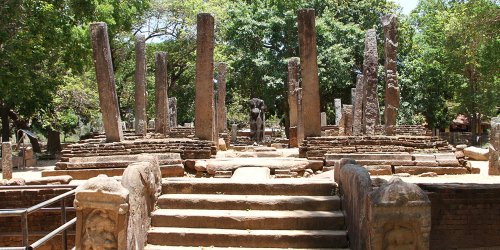


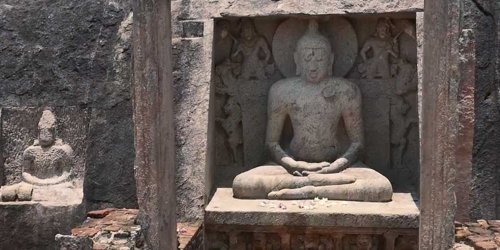







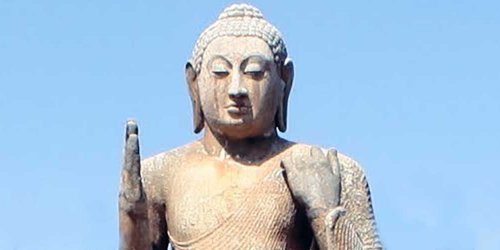
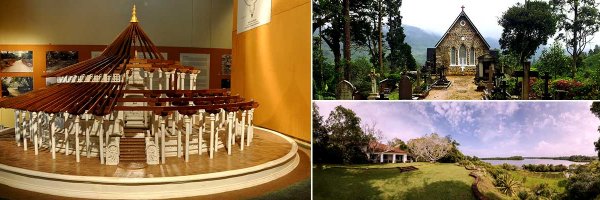

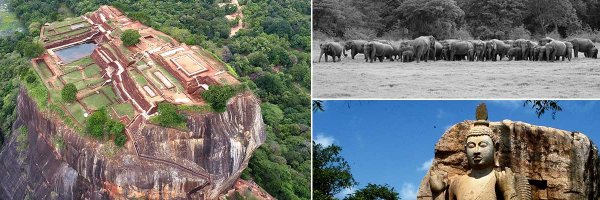
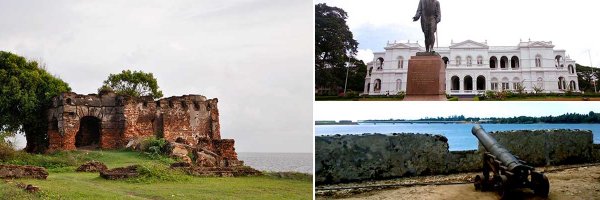
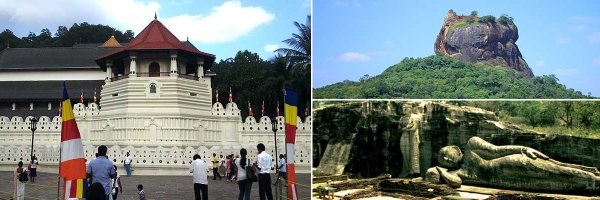



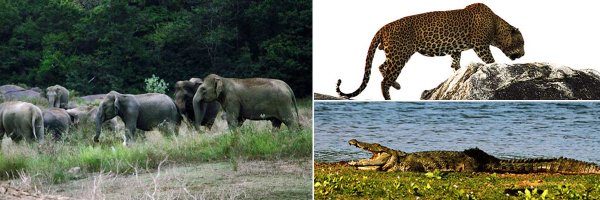

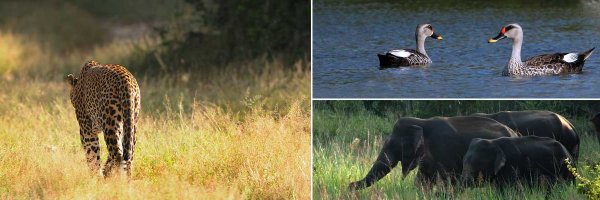

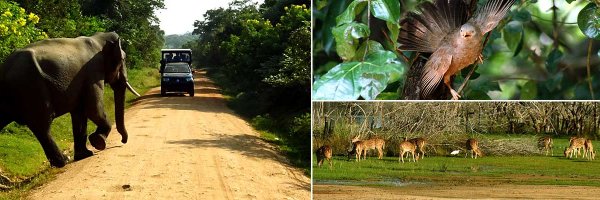







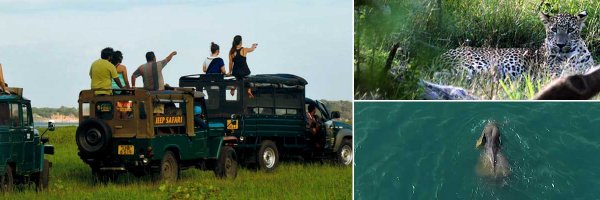
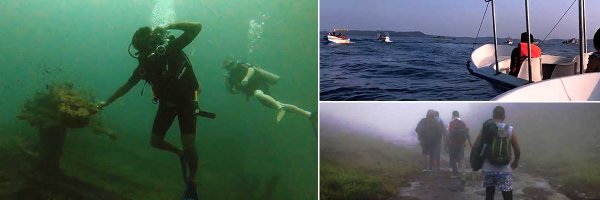
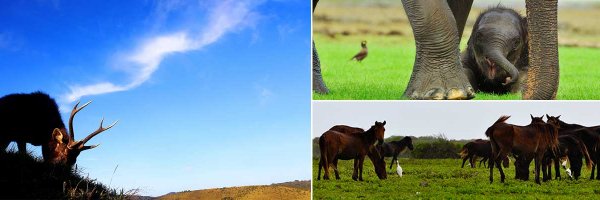

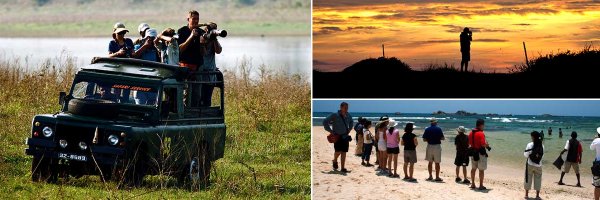




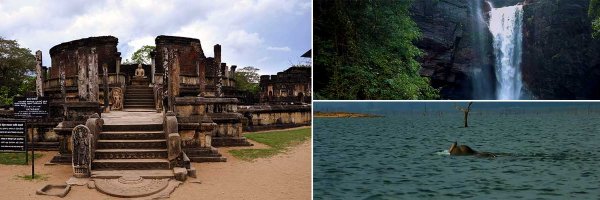
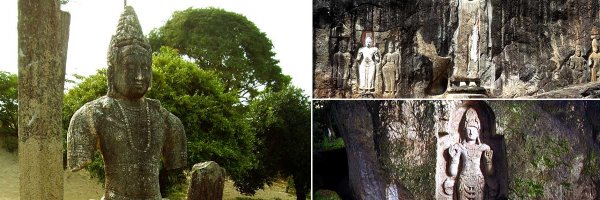



Share this page